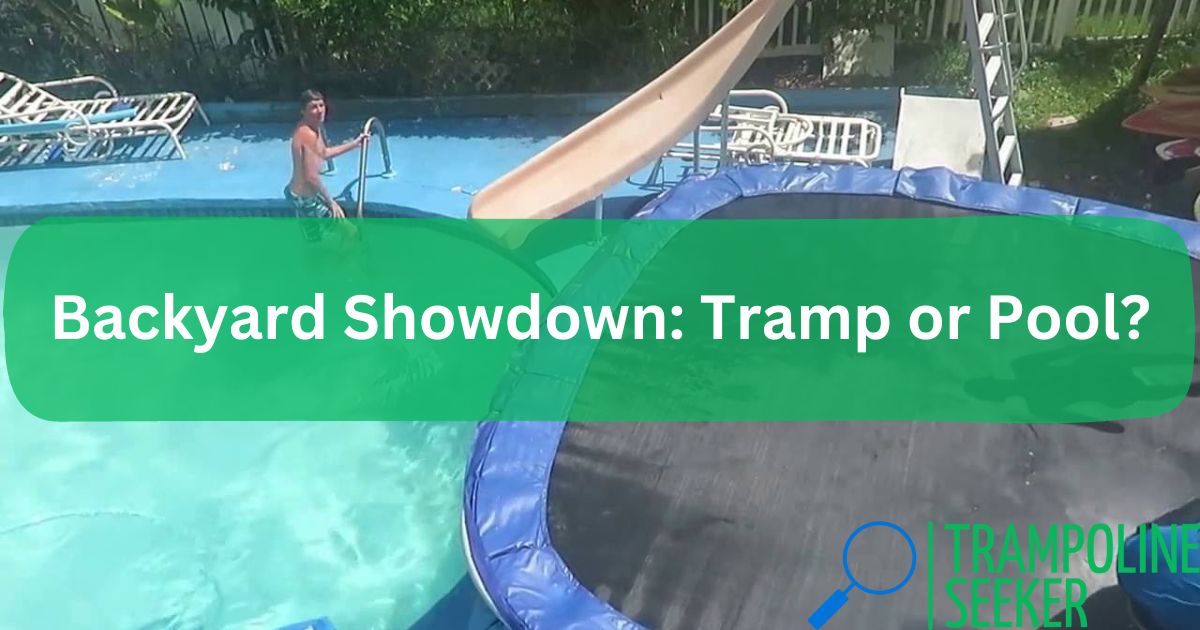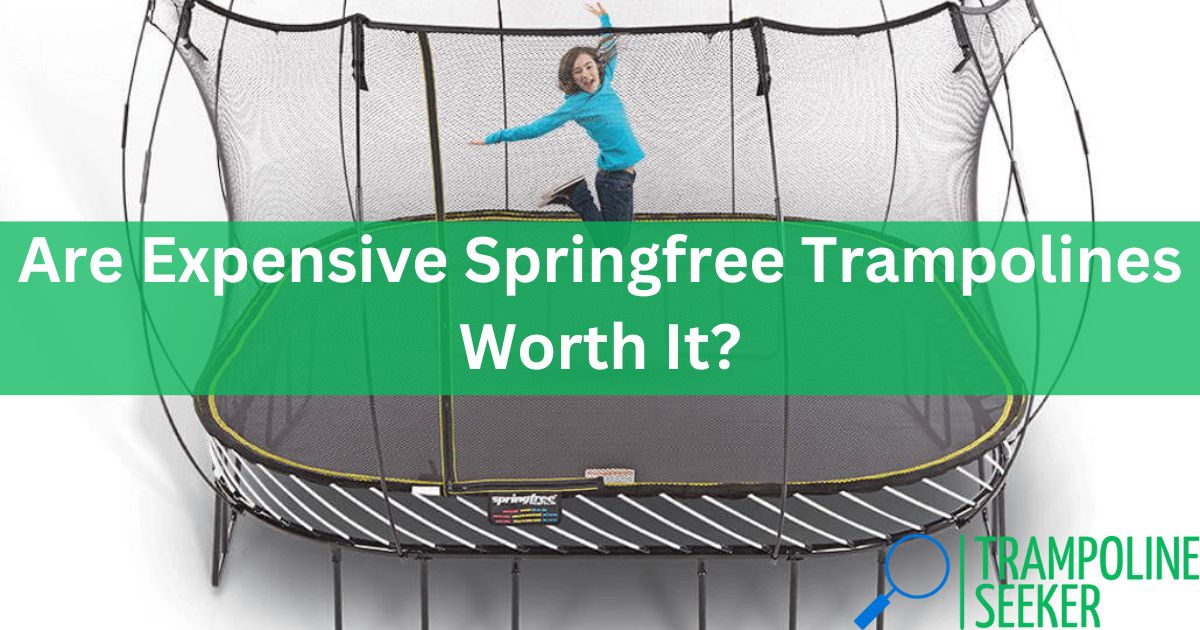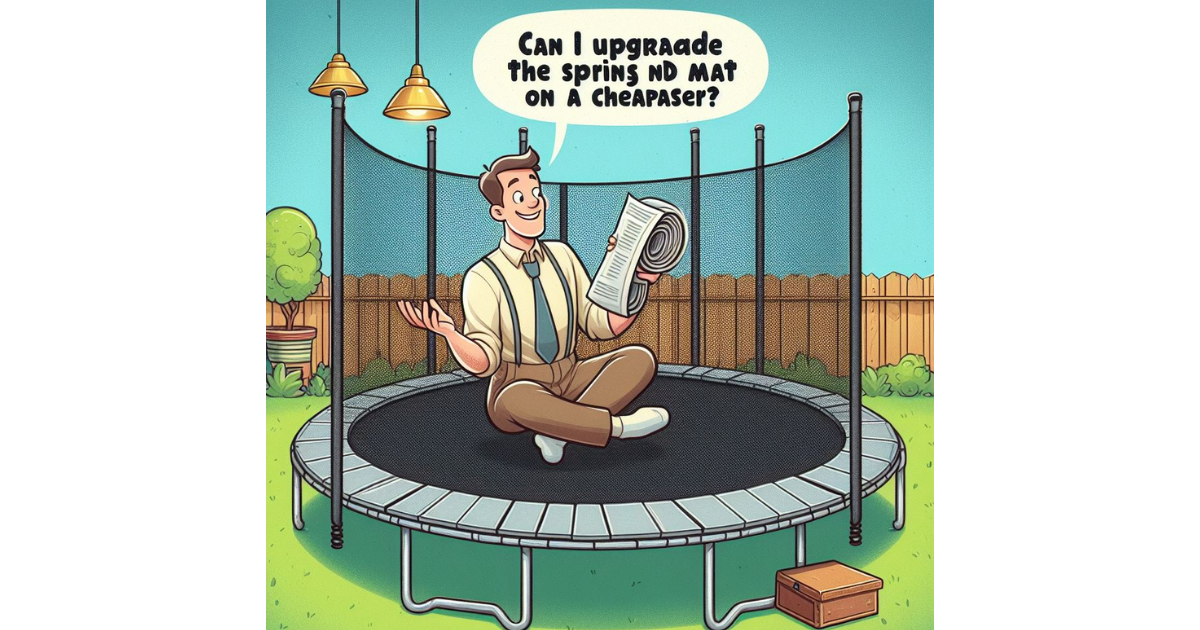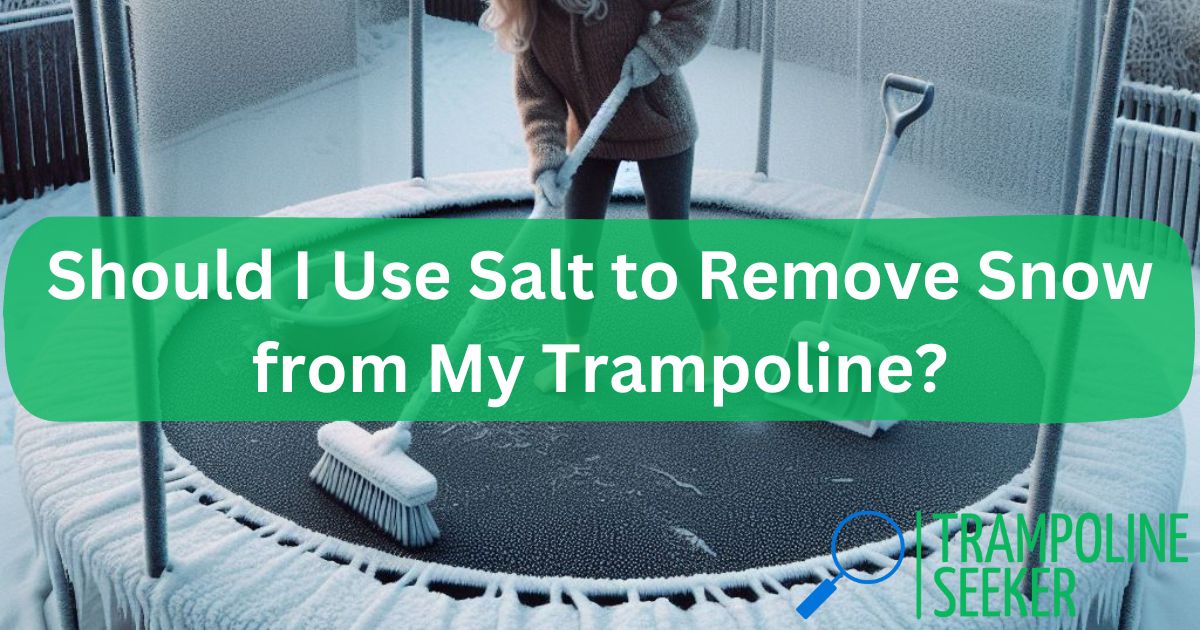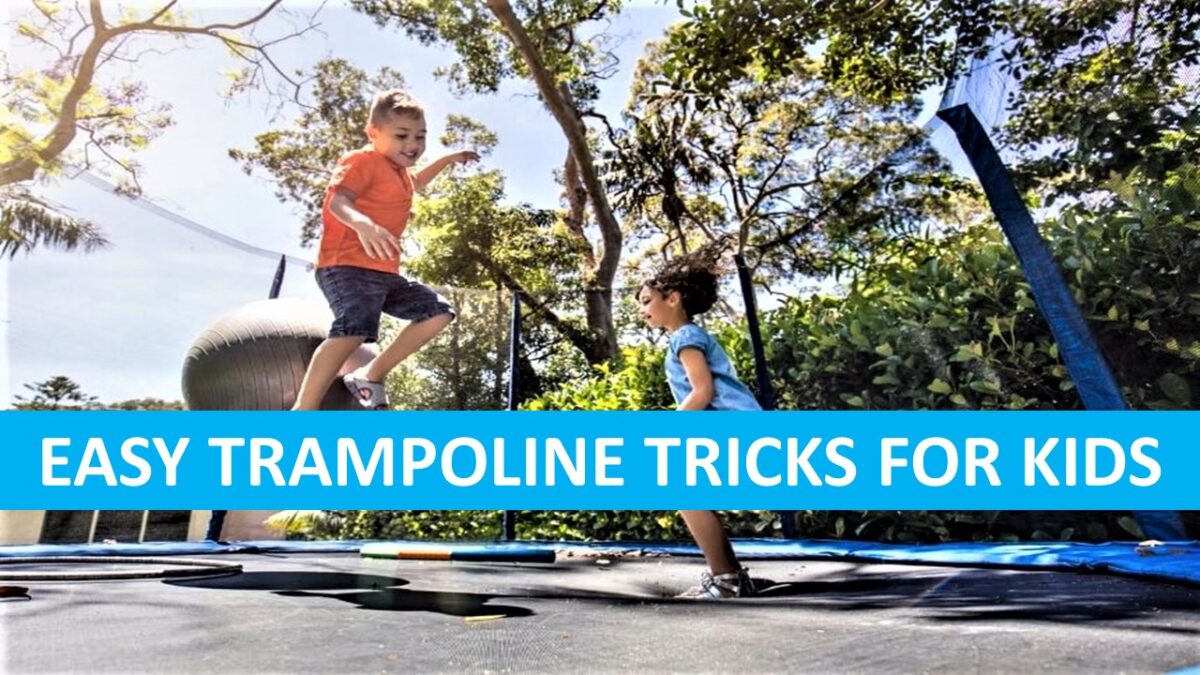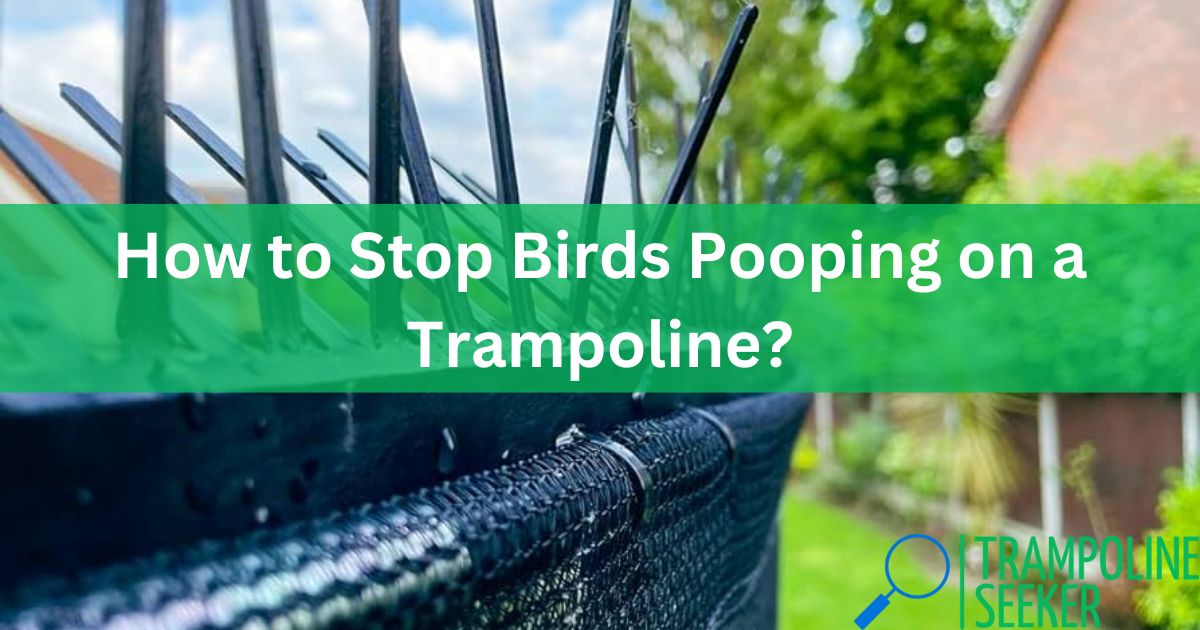Seeing a sagging, misshapen trampoline in your backyard can be disappointing and concerning. But don’t worry – with a bit of troubleshooting, you can likely identify the cause of the bowing and take steps to repair your trampoline.
Common culprits for a bowing trampoline include:
- Improper installation
- Excessive weight or use
- Exposure to extreme weather
- Low-quality materials
- Uneven ground
The good news is that a warped trampoline frame can often be corrected through adjusting, replacing parts, or reinforcing weak areas. And a sagging mat may just need re-centering or complete replacement.
Let’s dive into the details on why your trampoline may be bowing and what you can do to fix it!
Why Is My Trampoline Bowing?
A variety of factors can cause a trampoline to bow, bend, or sag out of shape. Here are some of the most common reasons you may find your trampoline deforming:
1. Improper Installation

One of the most preventable causes of a bowing trampoline frame is incorrect installation.
Trampolines require proper assembly and positioning of the frame, springs, jumping mat, safety pads, and any enclosure netting. If any components are attached improperly or inaccurately, it can lead to instability and too much pressure on certain sections.
For example, if the frame rails are misaligned, the legs sunk into the ground unevenly, or the springs aren’t attached correctly, the trampoline won’t distribute weight evenly across the surface. This uneven force distribution causes certain areas to be pushed down while other sections lift up.
Skipping steps or doing them out of order is another installation mistake that compromises the structure. Always carefully follow the manufacturer’s assembly instructions.
2. Excessive Use or Overloading

While trampolines are designed for bouncing, excessive use beyond the weight limits or recommendations can over-stress the materials.
Most trampoline specification sheets note maximum weight capacities and limits on the number of people who should use it simultaneously. For example, a common weight limit is 220-250 lbs for a single jumper. Exceeding this forces too much downward pressure and can bend the frame.
Similarly, having multiple heavy jumpers at the same time piles on way more weight than a single jumper of the same total weight. The synchronized bouncing multiplies the force.
So be sure to obey weight limits and usage recommendations to avoid bowing from overloading.
3. Exposure to Extreme Weather

Outdoor trampolines exposed to extreme weather can start to deform and sag.
In very hot regions, the heat can soften materials and cause stretching and warping, especially on the mats. Prolonged UV radiation from the sun also damages fabric and plastics over time.
In cold weather climates, accumulated freezing rain, ice, and snow add significant weight to the jumping surface. This pulls down heavily on the springs and frame. Gusty winds can also blow the trampoline over or stress the frame to bend.
And in coastal or flood regions, salt air and moisture can corrode springs and metal components, further reducing structural integrity.
Try to protect your outdoor trampoline from weather damage as much as possible for maximum life.
4. Low-Quality Materials

Cheaply made trampolines often use inferior quality materials that can’t withstand normal use for very long before problems occur.
Substandard metals that are too thin or too soft can bend and deform under regular jumping. And low-grade fabrics used on the mats and net enclosures will deteriorate faster as well.
Brand name trampolines made with heavy-duty, high-quality components are less likely to have bowing issues. So inspect materials carefully before buying.
5. Uneven Ground Surface

For safety and performance, trampolines require installation on a completely flat, level surface. But if the ground is uneven, sloped, bumpy, or becomes uneven over time, the frame can bend to conform to the imperfections.
The consistent bouncing force exerted by jumpers will gradually warp the trampoline frame to match the terrain beneath. This deformation worsens over time.
Always choose a flat spot for installing your trampoline. And periodically check that the ground remains level beneath it.
How to Fix a Bowing Trampoline
Once you’ve diagnosed the likely cause of your sagging, tilted trampoline, it’s time to repair the issue. Here are solutions for common problems:
1. Realign the Frame
If improper installation is to blame, you may be able to realign and resecure a bowed frame.
Use a rubber mallet to gently tap the frame rails back into their proper positions. Having a helper re-seat the legs while you align the frame above often works best.
Recheck that the legs are plumb and secured at equal depths in the ground. Then verify all connectors and joints are tight.
2. Reduce Weight and Usage
Compare your usage habits to the manufacturer’s recommendations. Avoid exceeding the maximum number of simultaneous jumpers and total combined weight limit.
Schedule trampoline times for households with many kids. Allow cooling off periods between heavy bouncing sessions. And restrict access if users aren’t following rules.
This helps take pressure off an overstressed frame and mat.
3. Add Weather Protection
Shield your outdoor trampoline from sun, wind, snow, ice, and rain damage.
A trampoline cover secures over the frame and mat to protect against UV rays, prevent snow/ice buildup, and reduce exposure to heavy rains.
You can also install protective wind barriers around the trampoline and stake down the frame securely.
Rust-inhibiting sprays help keep metal components corrosion-free.
4. Upgrade Quality
If an inexpensive trampoline is already sagging or bowing after a short time, replace it with a higher quality one for lasting performance. Look for robust construction with reinforced stitching, heavy-gauge springs, and strong framing.
Upgrading to better materials now avoids continual repairs down the road.
5. Level Uneven Surfaces
For minor ground unevenness, reposition the trampoline frame to the flattest section of your yard. Or improve the terrain by:
- Adding sand/dirt to low spots
- Installing shims beneath too-short legs
- Anchoring frame to a level wooden platform
This evens out the forces across the frame and prevents further bowing.
6. Replace Defective Parts
For broken, damaged, or defective components like mats, springs, or frame pieces, replacement is necessary.
Measure the original parts and order the same size replacements from the manufacturer, if possible. Or take the damaged section to a hardware store to find a suitable match.
Swapping out problem parts restores bounce performance and structure.
When to Call a Professional
While many bowing issues can be self-corrected, it’s smart to contact a trampoline pro for help if:
- Frame is cracking or broken
- There are many bent poles or rails
- Trampoline flipped over or blew away in extreme weather
- Mat or springs are severely damaged
- Trampoline is caving in dangerously
A trampoline specialist has the right tools, materials, and experience to safely repair substantial damage or replace irreparable parts. Don’t take risks trying to fix it yourself.
Professional tuning and maintenance can also maximize the lifespan of your trampoline investment.
Enjoy Safe Bouncing Again
With a little detective work and some DIY repairs, you can likely get your sagging, bowed trampoline bouncing properly again. Identify the underlying cause, and apply the matching solution.
But when damage is severe, don’t hesitate to call in a professional service for major repairs or a complete replacement.
Investing in a quality trampoline and taking measures to protect it from damage will provide many years of safe, high-flying fun for the whole family.
Now that you know why your trampoline may be bowing and how to fix it, you can get back to happy bouncing!
Frequently Asked Questions about Bowing Trampolines
Still have questions about solving trampoline bowing problems? Here are answers to some commonly asked questions:
Can weather really damage a trampoline?
Yes, extreme hot, cold, windy, or wet weather conditions over time can warp and degrade trampoline parts leading to bowing frames and mats. Prolonged exposure weakens materials.
How much weight can cause a trampoline to start bowing?
It depends on the trampoline, but exceeding maximum weight ratings by even one person can over-stress the materials. Bowing gradually gets worse the more the limits are ignored.
Is it dangerous to keep using a bowing trampoline?
Yes, it’s unsafe. The tilting forces users to one side, risking falls off the edge. Weak spots could collapse entirely. Stop using a malforming trampoline until it’s repaired.
Can I fix a bowing trampoline myself or do I need a professional?
Many causes of minor bowing can be fixed DIY if you’re handy. But major damage requires professional expertise and tools to repair or replace parts safely.
What is the fastest way to fix a bowing trampoline?
Realigning and tightening the frame often provides a quick improvement. But swapping damaged parts or the entire unit may be the only true fix for severe bowing.
Conclusion
A sagging, bowing trampoline is always concerning but doesn’t necessarily mean the end of its lifespan. In many cases, some detective work and straightforward solutions can restore your trampoline to proper form again.
But severe bowing or damage requires calling in the experts to tackle repairs safely. Don’t risk injury by continuing to use a malforming trampoline.
Protect your investment by assembling, using, and maintaining your trampoline according to recommendations. And address any minor bowing early before it compounds into irreparable damage.
With a quality trampoline and proper care, your whole family can enjoy safe, healthy bouncing for years of endless fun!
Articles You May Like to Read:


